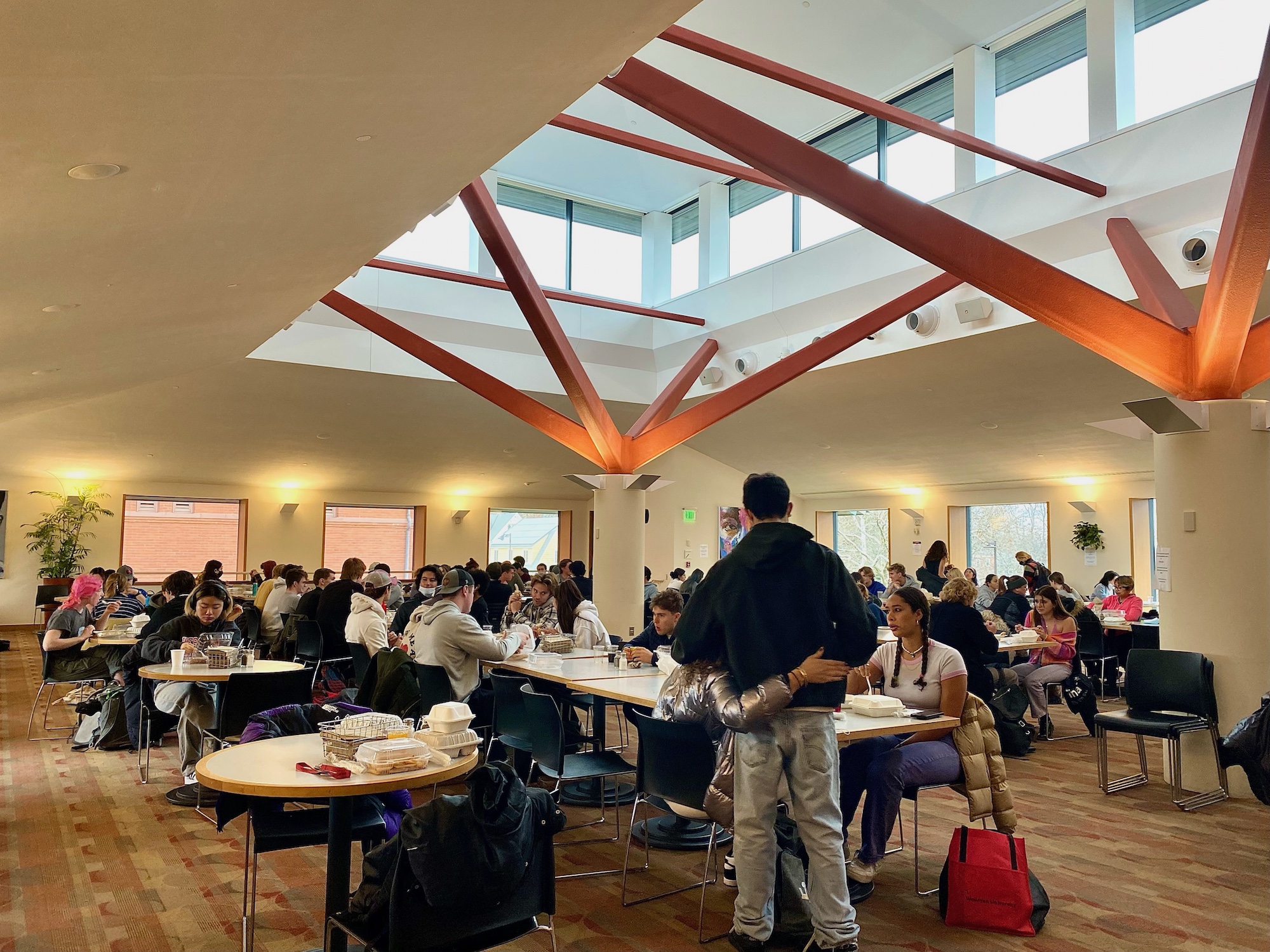
With the COVID-19 pandemic continuing to impact life on campus, the University instituted a grab-and-go dining policy for students during the initial stages of the spring semester. While this dining policy officially ended on Monday, Feb. 7, the restrictions on indoor dining during the first week of the semester saw long lines, sometimes stretching out the doors of Usdan University Center, during peak meal times.
While indoor seating was unavailable, other campus spaces remained open, including Olin Memorial Library, Freeman Athletic Center, and student residential areas. Associate Vice President and Dean of Students Rick Culliton explained the decision to implement grab-and-go dining at the start of the semester.
“The rationale for limiting dining to grab and go was to reduce the number of times that students would be together unmasked as we returned to campus,” Culliton wrote in an email to The Argus. “The [U]niversity continues to call for masking indoors in Olin and Freeman and therefore, those locations should not be as high risk as dining is.”
The goal was to keep as many people out of Usdan as possible so that risk levels could remain low while students got their meals.
“The idea of keeping people moving out of the building was the best possible solution to keep everyone, students and those working to support them, as safe as possible while everyone acclimated back to campus,” Director of Auxiliary Services Michelle Myers-Brown said.
While many students understood that COVID-19 restrictions would be required upon returning to campus, the lack of enforcement inside Usdan coupled with the cold weather outside made it difficult for students to adhere to the rules. Many ignored the restrictions on indoor dining and resorted to sitting on the floor in Usdan, while others tucked themselves away near student mailboxes or on couches to avoid having to eat in their rooms or in the frigid weather. Groups of students crowded the building, and though some Usdan employees tried to maintain the ban on indoor dining, others realized there was nothing they could do with so many students disregarding the policy.
“In the beginning, we could see how the Usdan workers were literally yelling at everyone and telling them to leave and not eat in here,” Usdan Box Office Assistant Ula Pranevicius ’24 observed. “But then, they kind of gave up and put away the sign that says students shouldn’t sit [inside]. So I feel like they kind of gave up and tried to make it more accommodating [to students].”
Myers-Brown also reflected on the difficulties around student compliance with University’s indoor dining policies.
“The policy had been well publicized, but unfortunately, some people refused to comply,” Myers-Brown said. “This was very frustrating as some felt that students didn’t care how much risk exposure could mean for them. Student staff were also uncomfortable being confronted by peers who couldn’t manage to follow the advertised guidelines for just two weeks. Many students complained about the policy. While we understood the inconvenience, we knew it was a short-term plan. It was disappointing to see how much push back there was.”
With Pi Cafe and Summerfields being closed or operating under shortened hours, the limited dining options on campus led Usdan to be packed with students, leading students to question the effectiveness of the University’s COVID-19 policies.
“They closed down Summies, Pi wasn’t open, and all these other meal options were not available,” Nika Marohnic ’24 said. “So everyone had to go to Usdan and I understood the importance of the COVID restrictions, but in reality, [it] made the COVID problem even worse.”
To add to the confusion, some of the restrictions were taken away in the middle of the first week of grab-and-go dining: drinks returned to being self-serve, and chairs appeared on the first floor of Usdan. Myers-Brown explained the decision behind easing these restrictions.
“With an ice storm predicted, the Auxiliary Services team reached out to administrators and the Pandemic Planning team to discuss ways in which we could honor the two week opening policy while at the same acknowledging the need to allow some flexibility for remaining in the building during bad weather,” Meyers Brown said. “Adding the chairs back into the first floor was the initial step we all agreed upon. Additional chairs were added back into the second floor over the weekend.”
Although dining restrictions were supposed to remain in effect until Monday, Feb. 7, the reintroduction of chairs to the downstairs area of Usdan further encouraged students to eat inside.
“I found it a little silly that we couldn’t do indoor dining but then they just opened downstairs,” Ethan Geiger ’24 said. “Everyone [was] everywhere. [At one point] when we went into Usdan to use a real meal swipe, it was just so crowded everywhere that we just decided to leave and we didn’t get anything.”
Despite the crowded numbers of students in Usdan and confusion over COVID-19 protocols, positivity rates on campus continue to remain low at 0.92%, which proves to be a silver lining for the University among the rapidly changing dining landscape.
Lia Franklin can be reached at lfranklin@wesleyan.edu.
Jo Harkless can be reached at jharkless@wesleyan.edu.


Leave a Reply